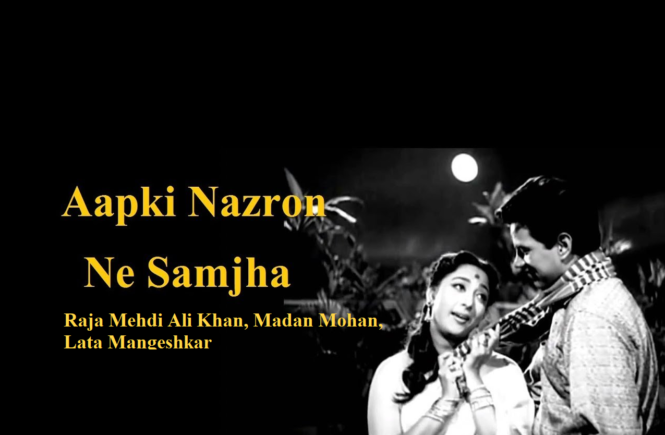Raaga Based Song of the Day: Aap ki nazaron ne samjha….
Raag Adana, Tal Rupaktal
As soon as you look at the post, the first thing that occurs to you is as to why this song now as 94th song and not much earlier. I hasten to add that the songs here have not been given as per any ranking or order. If I give you all the good songs first, won’t it become rather monotonous?
Today is the third time that I give you a song in this raaga. The first time I gave you a song in this raag was on the 25th day: Manmohan mein ho tumhi (Please see: ‘Raaga Based Song Of The Day #25‘). Naturally, I give you the best song composed in the raaga first. That song in Tintal was from the 1964 Atma Ram movie Kaise Kahoon. Next I gave you a song in this raaga and Kaherava Tal as the 59th song: Ai dil mujhe aisi jagah le chal (Please read: ‘Raaga Based Song Of The Day #59‘). It was from the 1950 movie Arzoo starring Dilip Kumar and Kamini Kaushal. It was penned by Majrooh Sultanpuri and composed by Anil Biswas.
We have completed ninety-three days of Raaga Based Songs of the Day. Our first post in the series was titled ‘Raaga Based Song Of The Day #1’ and the song was a Mohammad Rafi and Lata Mangeshkar song from the 1970 Shakti Samanta movie Pagla Kahin Ka: Tum mujhe youn bhula na paoge. It is in Raag Jhinjhoti, Tal Kaherava.
Our ninety-third post or the last post here was titled ‘Raaga Based Song Of The Day #93‘ and the song was a Mohammad Rafi and Lata Mangeshkar song from the 1961 Ramesh Saigal movie Shola Aur Shabnam starring Dharmendra and Tarla Mehta: Jeet hi lenge baazi ham tum. It is in Raag Bhairavi, Tal Dadra.
This blog has a number of posts on Raaga based songs in Hindi movies titled similarly; for example: ‘The Best Raaga Based Songs in Hindi Movies – Raaga Bhimpalasi – Part I‘.
In the last ninety-three days of sharing Raaga based songs of the day, I have given you songs based on Raag Jhinjhoti, Gara, Bhimpalasi, Madhuvanti, Shivaranjani, Bihag, Pahadi, Sarang, Pilu, Bhairavi, Khammaj, Charukesi, Kalyan or Yaman, Desh, Malgunji, Kirwani, Kedar, Bageshri, Megh Malhar, Bhupali, Ahir Bhairav, Malkaush, Mand, Adana, Kafi, Rageshri, Jaunpuri, Tilang, Janasammohini, Chayanat, Shuddha Kalyan, Gaur Sarang, Jogiya, Asavari, Maru Bihag, Durga, Lalit, Puria Dhanashri, Bhinna Sahdja, Sohani, Multani, Patdeep, Jaijaiwanti, Tilak Kamod, Hemant, Basant Mukhari, Gujri Todi, Kalavati, Hamir, Bhatiyar, Gawati, Shyam Kalyan, Gorakh Kalyan, Madhamat Sarang, Manj Khammaj, Darbari Kanada, Vibhas, Shankara, Bahar, Nand and Mian Ki Malhar; making it a total of 61 raagas. The raagas that have been repeated so far are Pahadi, the raaga of my home place in the Himalayas, Maru Bihag, Raag Kirwani, Jhinjhoti, Bhairavi, Gara, Basant Mukhari, Malkauns, Bhairavi, Mand, Sohani, Madhuvanti and Shivaranjani. Today, I am repeating Raag Adana for the third time.
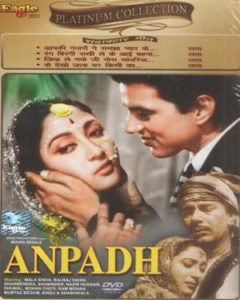
Today’s song is from the 1962 Mohan Kumar movie Anpadh starring Mala Sinha in the title role because her brother Balraj Sahni believed that women had no requirement to be educated since their job was to get married, love and look after their husbands. Dharmendra as her husband happened to be from a well-read family and hence Mala Sinha faced tremendous problems in the new home. She sang this song to her husband when finally he accepted her despite her being illiterate. As the movie progressed, her problems were not over because of this.
Having missed watching it when I was small, this too is amongst the hundred movies or so that I watched on the net, fascinated by its songs:
| “Hai Isi Me Pyar Ki Aabru” | Lata Mangeshkar | Raja Mehdi Ali Khan | Madan Mohan |
| “Jiya Le Gayo Ji Mora Sanwariya” | Lata Mangeshkar | Raja Mehdi Ali Khan | Madan Mohan |
| “Vo Dekho Jalaa Ghar Kisi Kaa” | Lata Mangeshkar | Raja Mehdi Ali Khan | Madan Mohan |
| “Rang Birangi Rakhi Leke Aayi Bahana” | Lata Mangeshkar | Raja Mehdi Ali Khan | Madan Mohan |
| “Sikandar Ne Poras Se Ki Thi Ladai” | Mahendra Kapoor | Raja Mehdi Ali Khan | Madan Mohan |
| “Dulhan Marwad Ki Aaaee Chham Chham” | Mohammad Rafi & Asha Bhosle | Raja Mehdi Ali Khan | Madan Mohan |
| “Aap Ki Nazron Ne Samjha” | Lata Mangeshkar | Raja Mehdi Ali Khan | Madan Mohan |
In the second half, as was the case with most movies of that era, the movie dragged and the end actually came as a relief. Yet, one can enjoy the songs.
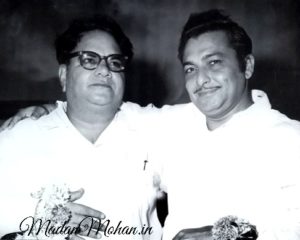
The lyricist of the song was Raja Mehdi Ali Khan. I have two blog posts on him: ‘The Magic of the Lyrics Of Raja Mehdi Ali Khan‘ and ‘Raja Mehdi Ali Khan’s Humorous Poem: Adib Ki Mehbooba‘. At the partition of India, he refused to go to Pakistan, stayed in India and wrote songs, especially with Music Director Madan Mohan, that became very popular and memorable.
I have quite a few of my favourite songs penned by him and composed by Madan Mohan. These are: Aakhri geet muhabbat ka suna loon to chalun, Aapko pyar chhupane ki buri aadat hai (Neela Akaash, 1965), Aapke pehlu mein aake ro diye, Jhumka gira re, Nainon mein badra chhaye, Nainon wali ne haay mera dil loota, Tu jahan jahan chalega (Mera Saya, 1966), Agar mujhase mohabbat hai, Main nigahen tere chehre se, Yehi hai tamanna tere ghar ke saamne (Aapki Parchhayiyan, 1964), Chhod kar tere pyaar ka daman, Jo hamne dastaan apni sunaayi, Lag ja gale ki phir, Naina barse rimjhim rimjhim, Shokh nazar ki bijliyan (Woh Kaun Thi, 1964), Ik haseen raat ko, Maine rang di aaj chunariya, Sapnon mein agar mere tum aao to so jaayun (Dulhan Ek Raat Ki, 1966), Jiya le gayo ji mora sanwariya, Vo dekho jala ghar kisi ka (Anpadh, 1962), and Meri yaad mein tum na aansu bahana (Madhosh, 1951).
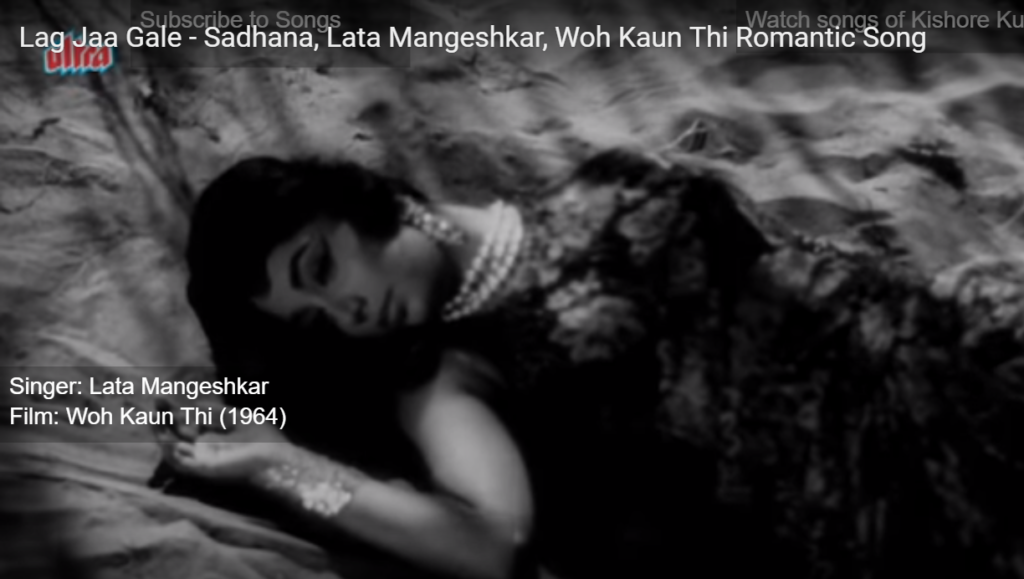
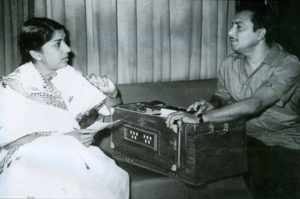 The Music Director Madan Mohan had a special relationship not only with Raja Mehdi Ali Khan but also with the singer Lata Mangeshkar. Some of the greatest songs of Lata Mangeshkar have been composed by him. Other than Raja Mehdi Ali Khan, many of these have been penned by Rajinder Krishan. Their Adalat songs made waves: Unako ye shikayat hai ke ham kuchh nahin kehte, Youn hasraton ke daag, and Jaana tha hamse door.
The Music Director Madan Mohan had a special relationship not only with Raja Mehdi Ali Khan but also with the singer Lata Mangeshkar. Some of the greatest songs of Lata Mangeshkar have been composed by him. Other than Raja Mehdi Ali Khan, many of these have been penned by Rajinder Krishan. Their Adalat songs made waves: Unako ye shikayat hai ke ham kuchh nahin kehte, Youn hasraton ke daag, and Jaana tha hamse door.
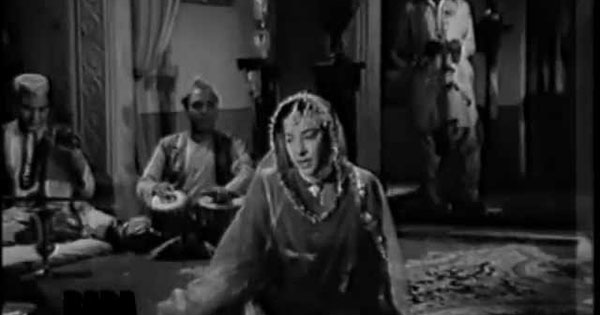
When it came to composing songs based on raagas, Madan Mohan was amongst the best. He composed this song: Aapki nazaron ne samajha pyar ke kaabil mujhe in Raag Adana. Tal Rupaktal.
Raag Adana belongs to Asavari Thaat. Raag Adana resembles Raag Darbari Kanada, with the difference that Gandhar is forbidden in Aaroh in Adana. This Raag is rendered mostly in Madhya and Tar Saptaks unlike Raag Darbari Kanada, which is more deep and hence is rendered in Madhya and Mandra Saptaks (Octaves). In this Raag, Komal Gandhar and Komal Dhaivat should not be repeated (oscillated) otherwise Raag Darbari Kanada makes its appearance. Like Darbari Kanada, this Raag does not employ Meend and Gamak, as this is a flittering dynamic type melodic form. Its Jati (and by now you understand this completely) is Shadhav-Smapurna Vakra. It is normally to be sung during the second prahar of the night, that is, between 9 PM and midnight. Adana was a major raga in the 17th century and a combination of the then current ragas Malhar and Kanada. In a ragamala painting from Mewar it is depicted as an ascetic man sitting on a tiger skin, however, Somanatha describes him as Kama the god of love. His Adana was quite different from the raga as it is performed today.
Some of the songs composed in this raaga are:
| 1. 2. 3. 4. 5. 6. 7. 8. 9. 10. 11. 12. 13. |
Jhanak Jhanak Payal Jaa Main Tose Manmohan Man Mein Lapak Jhapak Tu Mukh Se Na Boloon Ghar Aaja Meray Jab Ishaq Kahin Ho Jaata Hai Saanware Mat Ja Tumhe Jo bhi Cham Cham Baje Re Dil Ka Fasaana Aap ki nzaron ne samajha Radhike tune bansuri |
Jhanak Jhanak Payal Bajay Sautela Bhai Kaisay Kahoon Boot Polish Jalianwala Bagh Garam Coat Aarzoo – Majboor Jaane-Anjaane – Anpadh Beti Bete |
Ustaad Amir Khan & Chorus Lata Mangeshkar Rafi, Suman, S. D. Batish Manna Dey & Chorus Lata Mangeshkar, Talat Lata Mangeshkar Asha Bhosle, Mubarak Begum Lata Mangeshkar Hemant Kumar Manna Dey Manna Dey Lata Rafi |
Lets now re-learn about Rupaktal since we haven’t done this for quite some time:
Do you remember when we took up Dhrupad (Please read: ‘Raaga Based Song Of The Day #29‘)? That’s one style of singing that doesn’t use Rupaktal. However, Rupaktal is otherwise such a common tal that it is to be found in almost all styles of singing in Hindustani Music including Khayal.
Rupaktal distinguishes itself from the other Tals in that the first beat (Sam) is Khali (Wave and not Clap or Taali). The total number of beats (matra) are seven. It is represented by:
wave, 2, 3, clap, 2, clap, 2
that is, unlike the symmetric Tintal, the vibhags (three of them) are not of equal length.
and the Theka is:

At this juncture, since we are re-starting after a long time, please do recall that I had given you an introduction to Tal (musical measure) on the second day itself. Some of you would recall that I had mentioned that Tal, Taal or Tala is a word that is variation of the word Taali (Clap). Before the advent of Tabla, the standard method of keeping the musical measure was with the clapping or tapping of one’s hand on the arm or thigh. Indeed, now that we have Tabla, this beat is still maintained by clapping and waving of hands. If you recall, I had also mentioned that whilst the Raaga sets the mood, time of day and season of a composition, Tal constitutes the time-cycle. Therefore, a Raaga and Tal go hand in hand. On the 14th Raaga Based Song of the Day, was the only occasion when we didn’t have a Raaga (Kalyan) accompanied by a Tal since the entire composition of Lagata nahin hai dil mera was in Alaap.
The rhythmic hand gestures used to denote Tal are called Kriyas. If you recall, I laid emphasis on something called Vibhag or sections or angas or parts of a Tal. In Hindustani music, the first beat of a Vibhag is Tali (Clap), whilst the empty beat (Khali) is indicated is indicated by the sideways wave of the dominant clapping hand. And thus, you would recall, I represented the Tal for you with Claps and Waves.
We had also learnt that a Tal doesn’t have a fixed tempo or laya. Hence, we had learnt three different tempos: Vilambit (delayed or slow), Madhya (medium) and Drut (fast).
Before we actually take up the song, first, lets take up the value added learning of today. From the last twelve times we started learning about some of the leading personalities in Indian Classical Music or Shastriya Sangeet. The first one that we took up was Ustaad Asad Ali Khan, the finest Rudra Veena player in the country. Then we took up Pandit Hari Parsad Chaurasia, the greatest Bansuri player in the country. Then we talked about Ali Akbar Khan, the greatest Sarod player in the country. Then we took up Pandit Ravi Shankar, the greatest Sitar player in the world. Then we took up the greatest classical singer in the country (of Carnatic tradition): MS Subbulakshmi. Then, we took up the greatest classical singer in the country (of Hindustani tradition): Pandit Bhimsen Joshi. Then, we learnt about the Shehnai maestro Ustad Bismillah Khan. Then, we learnt about Annapurna Devi, a great Surbahar (bass sitar) player of Hindustani Classical Music. Thereafter, we took up Pandit Shiv Kumar Sharma, the grestest Santoor player in the country. Then we learnt a little more about Ustaad Alla Rakha Qureshi or simply Alla Rakha, the Tabla Maestro and father of Ustaad Zakir Hussain. Then we learnt about the master and one of the pioneers of fusion: Anand Shankar. Then we learnt about a Veena player who was also a great filmmaker: Sundaram Balachander. And finally we learnt about Sarod Player Ustad Amjad Ali Khan.
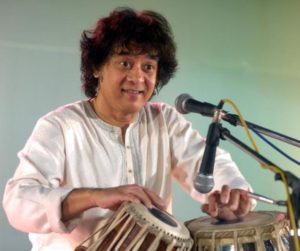
Tonight, we shall take up the Tabla Maestro Ustad Zakir Hussain, son of another great Tabla Maestro: Alla Rakha who we had taken up earlier. He was awarded the Padma Shri in 1988, and the Padma Bhushan in 2002, by the Government of India. He was also awarded the Sangeet Natak Akademi Award in 1990, given by the Sangeet Natak Academy, India’s National Academy of Music, Dance & Drama. In 1999, he was awarded the United States National Endowment for the Arts’ National Heritage Fellowship, the highest award given to traditional artists and musicians. He has won two Grammy awards.
Zakir Hussain was a recognised musician from St.Xavier’s College. Mumnbai whereat I used to go and attend Indian Classical Music performances when my brother was studying there.
From a young age, Zakir has been accompanying all the leading lights of Hindustani classical music, both vocal and instrumental – from Pandit Ravi Shankar, Ustad Vilayat Khan, Ustad Ali Akbar Khan, Pandit Hari Prasad Chaurasia, Pandit Shiv Kumar Sharma, Pandit VG Jog, Pandit Bhimsen Joshi, Pandit Jasraj, and many more.
In addition to being an outstanding accompanist, Zakir brought great attention to and raised the profile of tabla players, both through his solo excursions as an accompanist and through his solo tabla performances. His on-stage charm and virtuosity single-handedly raised the visibility of tabla players, who in times past were not considered very important to the performance. Zakir made stars out of tabla players, and a whole generation of young tabla players grew up imitating his head gestures and even his hair style while performing.
He also became famous for his ad: Waah Taj for the makers of Taj Mahal tea.
Ladies and gentlemen, please enjoy in Raag Adana Tal Rupaktal, Lata Mangeshkar sing a composition of Madan Mohan on the lyrics of Raja Mehdi Ali Khan in the 1962 Mohan Kumar movie Anpadh starring Dharmendra and Mala Sinha: Aap ki nazaron ne samjha…..
आप की नज़रों ने समझा, प्यार के काबिल मुझे
दिल की ऐ धड़कन ठहर जा, मिल गई मंज़िल मुझे
आप की नज़रों ने समझा
जी हमें मंज़ूर है, आपका ये फ़ैसला – २
कह रही है हर नज़र, बंदा-परवर शुकरिया
दो जहाँ की आज खुशियाँ हो गईं हासिल मुझे
आप की नज़रों ने समझा …
आप की मंज़िल हूँ मैं मेरी मंज़िल आप हैं – २
क्यूँ मैं तूफ़ान से डरूँ मेरे साहिल आप हैं
कोई तूफ़ानों से कह दे, मिल गया साहिल मुझे
आप की नज़रों ने समझा …
पड़ गई दिल पर मेरी, आप की पर्छाइयाँ – २
हर तरफ़ बजने लगीं सैकड़ों शहनाइयाँ
हँसके अपनी ज़िंदगी में, कर लिया शामिल मुझे
आप की नज़रों ने समझा …
We have intended to learn about Raaga based music whilst we entertain ourselves with Raaga based songs. So, lets, once again, take stock of our collective learning so far:
- On the first day we learnt about the Raaga system devised by Pandit Vishnu Narayan Bhatkhande, which is the prevalent system in Hindustani Classical Music and based on ten Thaats.
- On the second day we learnt about Tal or Taal.
- On the third day we learnt about characteristics of Raagas that included Swar, Jati, Thaat, Arohana and Avarohana, Vadi, Samvadi and Pakad.
- On the fourth day, we learnt about Sargam.
- On the fifth day, we learnt about notations used in Indian classical music or simply Swar Lipi.
- On the sixth day, we learnt about the Ras (sentiments) that Raagas evoke.
- On the seventh day, we learnt about various types of Swar: Shuddha, Achal, Vikrut, Komal and Teevra.
- On the eighth day, we learnt the parts of a composition in Indian Classical Music.
- On the ninth day, we learnt the names of some of the popular instruments used in Indian Classical Music.
- On the tenth day, we learnt about the sources of names of Raagas.
- On the eleventh day, we learnt about why Bhairavi is the first raag to be taught to beginners and also why it is the last in a performance.
- On the twelfth day, we learnt about Khammaj Thaat.
- On the thirteenth day, we learnt about Tal Punjabi Theka or Sitarkhani.
- On the fourteenth day, we learnt about Alap.
- On the fifteenth day, we learnt about List of Raagas (Raagmala) in my favourite book: Sri Guru Granth Sahib.
- On the sixteenth day, we learnt about tips for raaga identification.
- On the seventeenth day, we learnt the basics of Gharana system.
- On the eighteenth day, we learnt about Filmi Sangeet.
- On the nineteenth day, we learnt about the commonest Tal in Raagas: Tintal.
- On the twentieth day, we learnt about the Kafi Thaat.
- On the twenty-first day, we learnt a little more in detail about the classification of Raagas.
- On the twenty-second day, we learnt the essential differences between Bhairavi and Bhairav.
- On the twenty-third day, we learnt a little more in detail about the Jati or Jaati of a raaga.
- On the twenty-fourth day, we learnt details of Thaat Bilawal, the most basic thaat in the Bhatkhande’s system of raagas.
- On the twenty-fifth day, we learnt about Tintal.
- On the twenty-sixth day, we learnt in detail about the Raaga – Samay linkage.
- On the twenty-seventh day, we learnt about Lehar.
- On the twenty-eighth day, we learnt about the history of the Hindustani Music.
- On the twenty-ninth day, we learnt about Dhrupad.
- On the thirtieth day, we learnt about Rupaktal that I was introduced to, a few months back, by my friend Anand Desai.
- On the thirty-first day, we learnt about Khayal.
- On the thirty-second day, we learnt about Thumri.
- On the thirty-third day, we learnt about Tappa.
- On the thirty-fourth day, we learnt about Tarana.
- On the thirty-fifth day, we learnt about Tal Dipchandi (Moghali).
- On the thirty-sixth day, we learnt about Tabla.
- On the thirty-seventh day, we learnt about Kirtan.
- On the thirty-eighth day, we learnt about Pakhawaj.
- On the thirty-ninth day, we learnt about Hori.
- On the fortieth day, we learnt about Dadra.
- On the forty-first day, we learnt about Kajri.
- On the forty-second day, we learnt about Chaiti.
- On the forty-third day, we learnt about Sarangi.
- On the forty-fourth day, we learnt about Shehnai.
- On the forty-fifth day, we learnt about Sarod.
- On the forty-sixth day, we learnt about Bansuri.
- On the forty-seventh day, we learnt about Ektal and Tanpura.
- On the forty-eighth day, we learnt about Veena.
- On the forty-ninth day, we repeated our learning of Veena with a small excitement added.
- On the fiftieth day, we learnt about Dilruba/Esraj.
- On the fifty-first day, we learnt about Jaltarang.
- On the fifty-second day we learnt about Qawwali.
- On the fifty-third day, we learnt about Sitar.
- On the fifty-fourth day, we learnt about Surbahar.
- On the fifty-fifth day, we learnt about Harmonium.
- On the fifty-sixth day, we learnt about Santoor.
- On the fifty-seventh day, we learnt about Swarmandal.
- On the fifty-eighth day, we learnt about the Shruti Box.
- On the fifty-ninth day, we learnt about Alankar.
- On the sixtieth day, we learnt about singing in Aakaar.
- On the sixty-first day, we learnt about the Classification of Indian Musical Instruments.
- On the sixty-second day, we learnt a little about Carnatic Music.
- On the sixty-third day, we learnt about Natya Shastra.
- On the sixty-fourth day, we learnt about evolution of musical instruments in India down the ages.
- On the sixty-fifth day, we learnt about Riyaaz.
- On the sixty-sixth day, we looked at a list of Raagas in Hindustani Classical Music.
- On the sixty-seventh day, we learnt about the health benefits of raagas.
- On the sixty-eighth day, we learnt a little more comprehensively about the moods and emotions that raagas evoke.
- On the sixty-ninth day, we learnt about a mobile application to help identify raagas.
- On the seventieth day, we learnt about Melakarta Raagas.
- On the seventy-first day, we learnt about Sangita Makarand.
- On the seventy-second day, we learnt about TaalMala an Android application for personalized accompaniment of musical instruments during Riyaaz or even during Concert.
- On the seventy-third day, we learnt about Indian Classical Ragas, an Android application for mobile phones.
- On the seventy-fourth day, we learnt about Saregama Classical, another application for Classical Raagas.
- On the seventy-fifth day, we learnt about a free online service available to learn Indian Classical Music.
- On the seventy-sixth day, we learnt about List of Hindustani Classical Musical Festivals in India and Abroad.
- On the seventy-seventh day, we learnt about List of Carnatic Musical Festivals in India and Abroad.
- On the seventy-eighth day, we learnt about Jhaptal.
- On the seventy-ninth day, we learnt about Ektal.
- On the eightieth day, we learnt about Tivra Tal.
- On the eighty-first day, we learnt about the greatest Rudra Veena player ever: Ustaad Asad Ali Khan.
- On the eighty-second day, we learnt about the greatest Bansuri player alive: Pandit Hariprasad Chaurasia.
- On the eighty-third day, we learnt about the best Sarod player in the country: Ustaad Ali Akbar Khan.
- On the eighty-fourth day, we learnt about the greatest Sitar player in the world: Pandit Ravi Shankar.
- On the eighty-fifth day, we learnt about the greatest Indian vocalist of Carnatic tradition: MS Subbulakshmi.
- On the eighty-sixth day, we not just learnt about the greatest vocalist of Hindustani tradition: Pandit Bhimsen Joshi but also learnt about Tal Hinch.
- On the eighty-seventh day, we learnt about the Shehnai maestro Ustaad Bismillah Khan.
- On the eighty-eighth day, we learnt about Annapurna Devi, the greatest Surbahar player in India.
- On the eighty-ninth day, we learnt about Pandit Shiv Kumar Sharma, the greatest Santoor Player in the country.
- On the ninetieth day, we learnt about Ustaad Alla Rakha, the Tabla maestro.
- On the ninety-first day, we learnt about Anand Shankar, the great fusion musician from Bengal.
- On the ninety-second day, we learnt about Sundaram Balachander, the great Veena player and film-maker.
- On the ninety-third day, we learnt about Ustaad Amjad Ali Khan, the great Sarod player.
- And today, on the ninety-fourth day, we learnt about the tabla maestro: Ustaad Zakir Hussain.
There is much more still to be learnt and enjoyed.
Please stay tuned!
